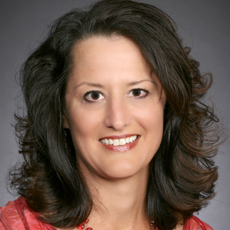
Unless you haven’t had a health problem — or you have not been to a doctor or healthcare center in ages—you know the healthcare system is changing. You also know America spends an enormous amount of money on health care. To see it decrease, our government is attempting to make changes to allow for better care and better overall health for Americans while lowering costs.
The millions of patients who will benefit from these changes are the most important factor in explaining why this effort began. Proactive healthcare and maintenance will keep people healthier and therefore reduce overall costs. It all sounds relatively easy in theory. Of course, we know it’s not.
The main barrier we all face is how we communicate with and educate our population, which means providing good information to both providers and consumers. If consumers are educated and start looking for the most appropriate medical services, but the provider has not done a good job of educating staff, the system will break down.
As a provider of care for post-acute care patients with 300 employees, it’s my job to make sure my staff is fully briefed on the changing environment we face. I must also make sure that as we modify our internal systems and change expectations of staff in any way due to health care changes, we inform our staff why these changes are happening. If not, staff will resist changes instead of implementing them.
Providers in healthcare (or for that matter any business) know we would be nowhere without our staff members. They are the lifeblood of our business. They provide the services that bring us reimbursements and patients. Without them, we would not exist. Thus, as a company, we need to keep them in the know and also involve them in helping to modify company systems.
During the past year, our company has been implementing processes centered around the Triple Aim — improving the experience of healthcare, improving overall health for populations and reducing costs. Last year, we generated ideas that have now turned into systems or processes. These ideas were the result of discussions with all staff on how to better meet the Triple Aim.
Throughout the year, I have had conversations with the entire company in which I shared our progress on implementing the amazing ideas generated by employees. I also inform them about the focus of the coming quarter and share any updates on further alterations that are happening in the field.
When offered the opportunity to be involved in the transformation of a company to better meet the needs of a changing field, employees should be involved in brainstorming about what that will look like. In my opinion, it is my job to provide structure by knowing what the regulations are, so I may guide employees in the right direction.
In the post-acute care world of therapy services, employees are hard to come by. Showing them how much they are valued means including them in the planning process. Why would I sit in my ivory tower and tell them what to do when they are full of so many great ideas and concepts? If implemented in the right manner, these concepts will move us that much closer to attaining the Triple Aim. The more involved staff members are, the more connected they feel, which has better implications for retention and compliance — and the people we serve.
CEO/President Kristy Brown brings more than 25 years of management experience to Centrex Rehab. Brown was the executive director of therapy services at Augustana Therapy Services between 1999 and 2012. A speech language pathologist by training, she developed a passion for management soon after graduating and sought to positively affect patient care.




